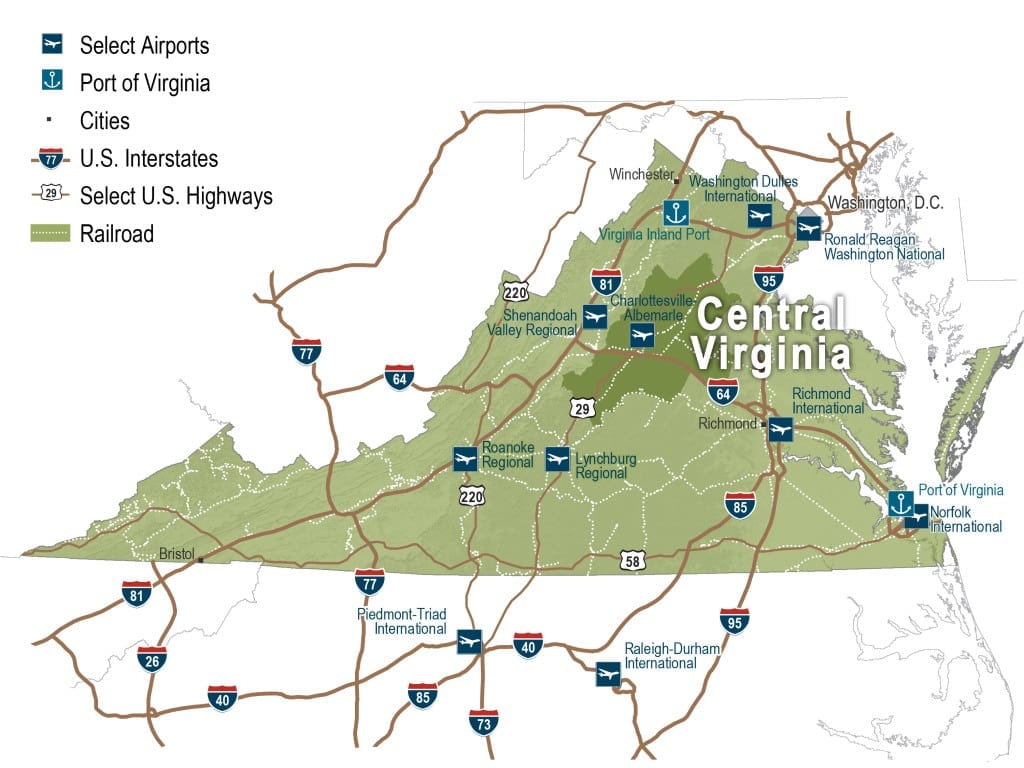Transportation Infrastructure
- Interstate Connectivity
- Airports
- Rail
- Port of Virginia
- Map of Central Virginia Transportation Assets
I-64 and many four-lane highways including US 29, US 15, US 20, and US 33 connect the Central Virginia to I-95, I-81, and I-66, to over 50% of the nation’s consumers, and to population centers and major markets.
Major interstate highways and US routes:
-
Interstates 64 and 66 connect Central Virginia to Interstates 81 and 95 for access to north/south destinations
-
Interstate 64 runs through the region, connecting Central Virginia to the Port of Virginia and destinations to the west
-
Interstate 66 connects Central Virginia to Washington DC and beyond
-
US Route 29 runs through most of the region – connecting Central Virginia to destinations from Florida to the Greater DC area
Convenient access to the East Coast population centers and major markets:
| Washington, DC | 65 Miles |
| New York, NY | 298 Miles |
| Boston, MA | 513 Miles |
| Atlanta, GA | 586 Miles |
| Chicago, IL | 721 Miles |
The Charlottesville-Albemarle Airport (CHO) provides direct, daily flights to Atlanta, Charlotte, New York City, Philadelphia, and Washington, DC, via American, Delta, and United Airlines. Other airports in the region include the Culpeper Regional Airport, the Gordonsville Municipal Airport, the Louisa County Airport/Freeman Field, and the Orange County Airport.
Central Virginia also offers access to major international airports: Dulles International Airport, Reagan National Airport, Richmond International Airport, and Baltimore/Washington International Airport.
Passenger Rail service is provided by Amtrak, providing multiple daily trains to and from Washington, DC, New York and beyond. Freight train service is provided by the Buckingham Branch Railroad, CSX Transportation, and the Norfolk Southern Railway Company. Moving more than 37% of its total cargo by rail, the Port of Virginia offers one of the largest inter-modal networks on the East Coast.
The Port of Virginia is the deepest shipping channel on the East Coast, offering businesses an efficient and cost effective method of moving ocean freight. The Port can be one of the most significant competitive advantages for companies importing and exporting products internationally. More than 30 international steamship lines service the Port, and rail connections to inland markets are offered via on-dock, double-stack intermodal service. Virginia Inland Port at Front Royal is 30 miles from Central Virginia.


